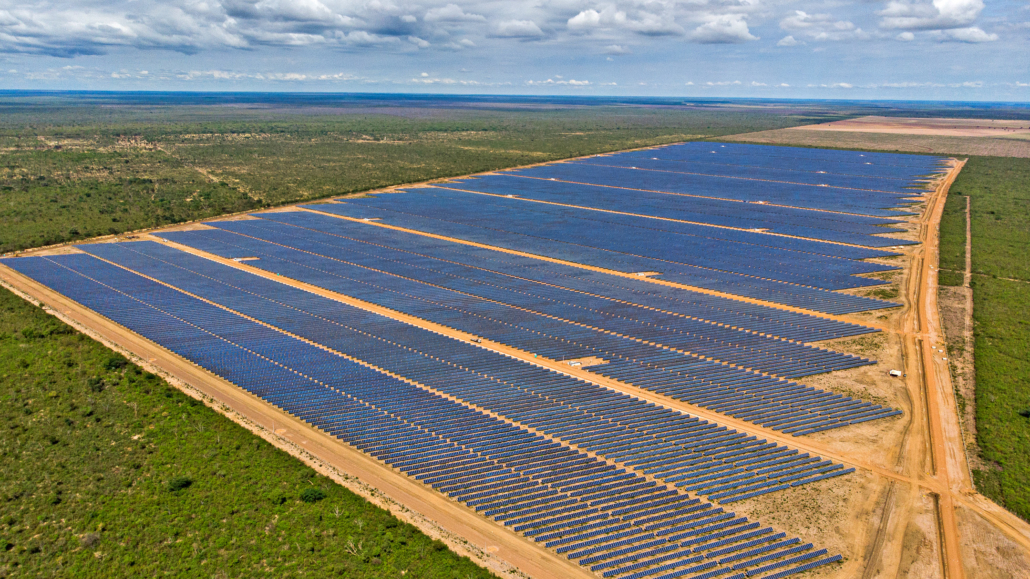RIO DE JANEIRO, BRAZIL – In just ten years, installed photovoltaic capacity in the region has grown from just under sixty megawatts to over 20,000 megawatts in operation today. However, more than 85% of this capacity is concentrated in just four countries: Brazil, Mexico, Chile, and Argentina.
These are some of the findings of the telematics seminar recently held by the Global Solar Council. This Washington-based organization brings together associations of photovoltaic companies from around the world. Its president is José Donoso of Spain.
“Photovoltaic solar energy is one of the cleanest and cheapest ways to generate electricity, which gives us great confidence in the future of the industry.” José Donoso, president of the Global Solar Energy Council (and director-general of the Spanish Photovoltaic Union, UNEF), said this during the seminar’s opening ceremony.
Donoso took the opportunity to congratulate Brazil on surpassing the ten-gigawatt mark (10,000 megawatts) in installed solar power capacity.

Rodrigo Sauaia, CEO of the Brazilian Solar Photovoltaic Association (ABsolar) and co-chair of the Global Solar Council (GSC) highlighted that “most new jobs in the renewable energy sector are created by photovoltaic: In the last ten years, more than 360,000 jobs have been created in the solar sector in Brazil.”
Rodrigo Sauaia, CEO of ABsolar: “The Brazilian market – the largest in Latin America – was characterized by good auction prices, even after the pandemic, and by the success of the PPAs, which increased the installed capacity to more than 12 GW in 2021, of which two-thirds will be distributed.”
ARGENTINA
From Argentina, Marcelo Álvarez, president of the Argentine Chamber of Renewable Energy (Cader), secretary of the General Secretariat of the Council, and member of the LatAm Working Group, participated in the seminar.
Álvarez criticized that “the Argentine market suffers from a complex bureaucracy and unequal tariffs throughout the country. So, the payback period is not always good, and the results can vary even within the same legal framework.
The good news,” he added, “is that today’s niche markets are growing fast, such as water pumping, industrial parks, the end of distribution lines, energy storage… Agrivoltaics, in particular, is promising for our region because it has landed.”
MEXICO
The Director-General of the Mexican Solar Energy Association (AsolMex), Nelson Delgado, spoke about the situation in Mexico, highlighting, in particular, the acceleration of the solar market in his country in the last five years.
“Solar photovoltaic energy grew from 171 MW in 2017 to more than 7,000 MW in 2021, almost exclusively in the utility sector and unevenly throughout the country. Still, the market has tremendous growth potential: according to the International Renewable Energy Agency, Mexico could install 30,000 megawatts with 40% distributed solar, which is currently only 1,800 megawatts.
CHILE
For David Rau, vice president of the Chilean Solar Energy Association (Acesol), who recently became a member of the GSC, the development of residential solar energy is an important goal for Chile on the road to “Grid Zero.”
Still, it is necessary to modernize the electricity distribution networks to automate and digitize the new requirements that users need and accompany a massive change in regulation for the distribution sector.
Rau added that the outcome of the recent elections should be good news, as the new government (to be led by leftist Gabriel Boric) promises to put climate action and renewable energy at the heart of the country’s plan.
Chile not only has the highest solar radiation in the world but is also the world’s largest producer of copper and the second-largest producer of lithium, both critical technologies for electronics and renewable energy.
PERU
Participating from Peru was Paloma Sarria, Executive Director of the Peruvian Renewable Energy Association, “The potential for renewable energy [in Peru] is ten times higher than the installed capacity – said Sarria – and more than 2,000 megawatts of photovoltaic solar energy are expected to be installed in the next 8-10 years, representing nearly US$1.5 billion in potential investment and more than 10,000 new jobs.”
The GSC webinar also devoted a separate space to cities, which play a crucial role in promoting renewable energy through climate and energy targets and integrating it into buildings.
“Cities occupy 2% of the Earth’s land area but are at the forefront of the causes of climate change. They consume about 75% of the world’s energy and generate more than 70% of energy-related greenhouse gas emissions,” said Ilan Cuperstein, Deputy Regional Director for Latin America at C40 Cities.
GLOBAL SOLAR COUNCIL
The Global Solar Council defines itself as “the voice of the global solar energy industry”. It is a Washington DC-based non-profit organization representing national, regional, and international associations and solar industry leaders.
Established at the 2015 Paris Climate Conference as a private sector response to the climate emergency, the Global Solar Council brings together established and emerging market associations representing companies across the solar energy supply chain.

